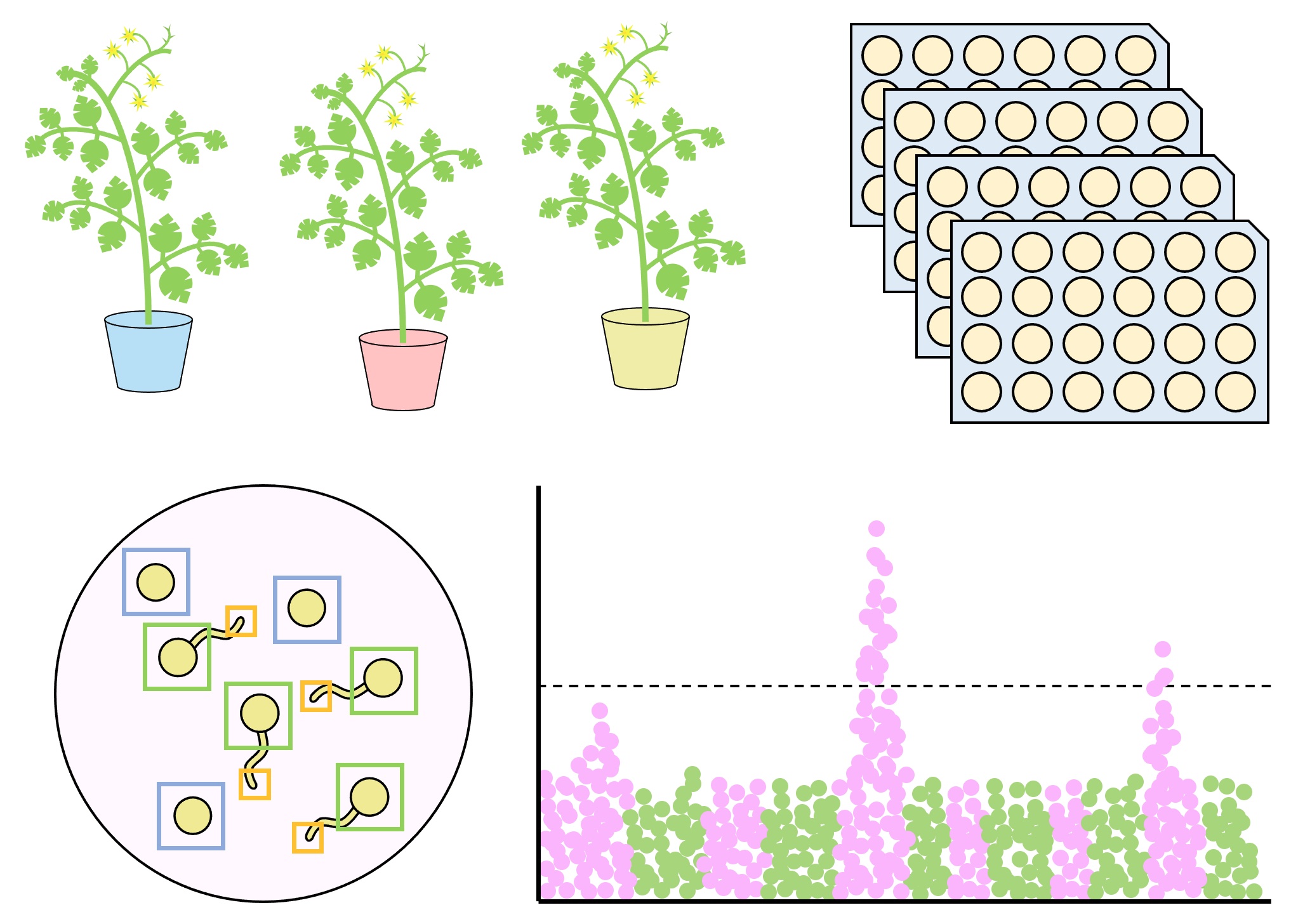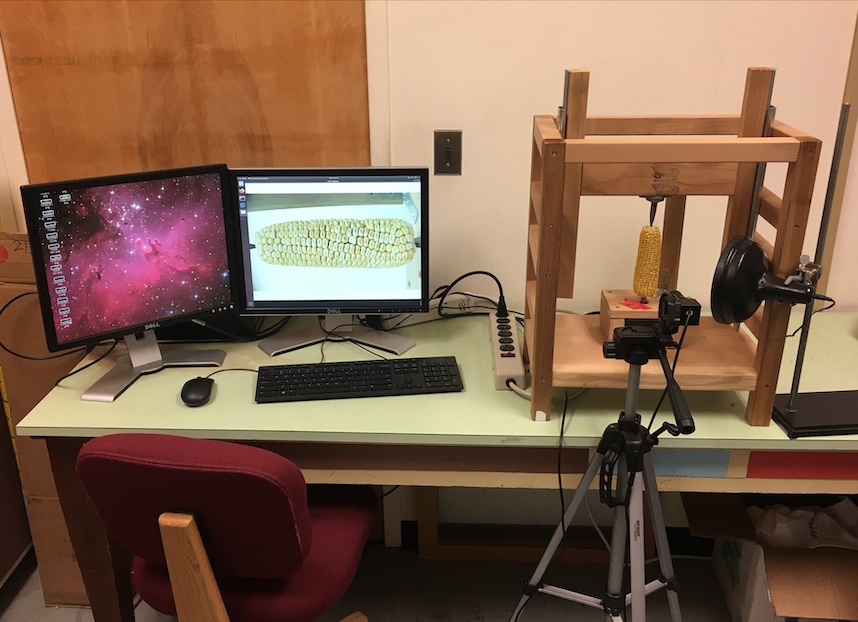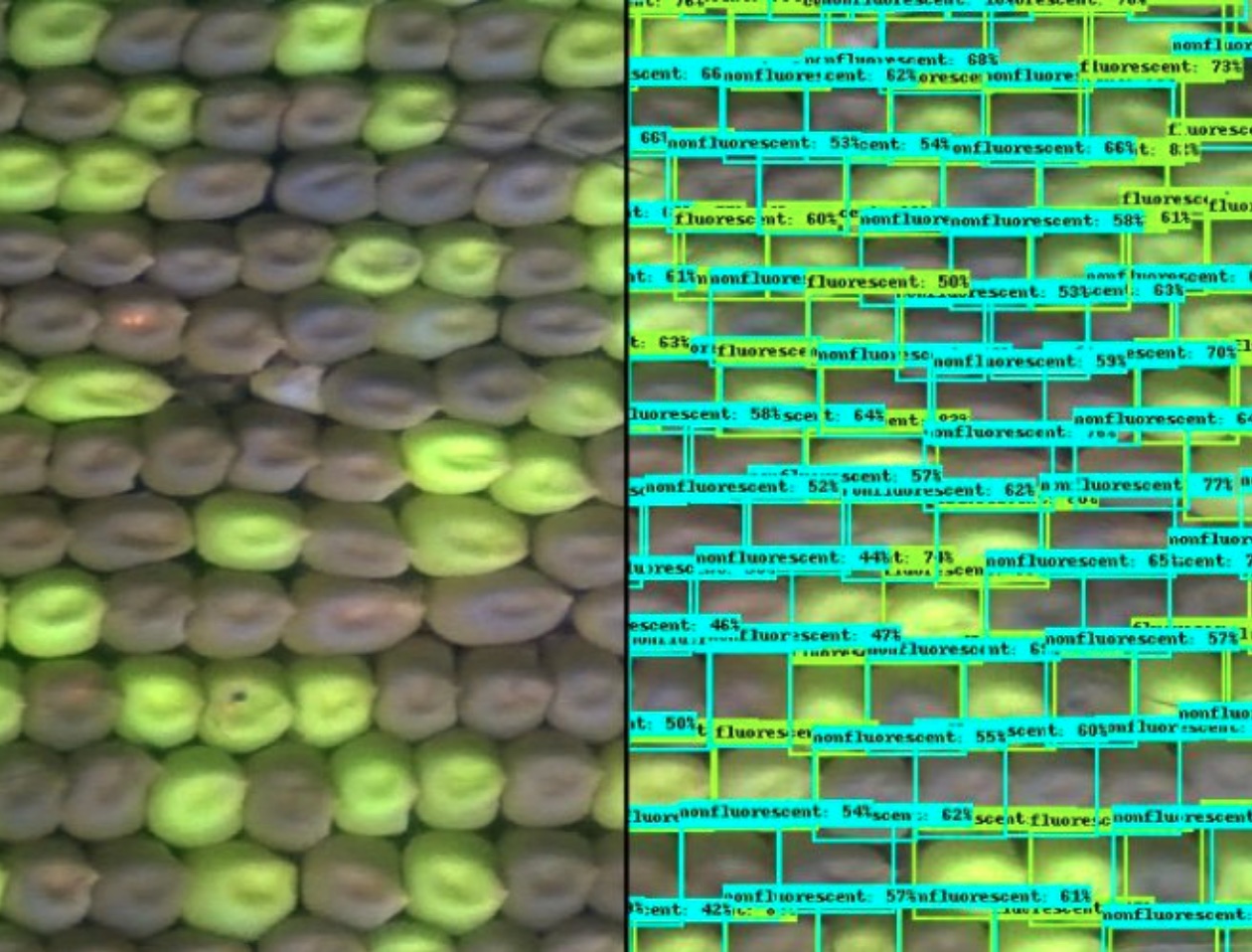Academic research
Pollen molecular function
To the human eye, pollen is a tiny, featureless dot of yellow, if it can be seen at all. However, hidden within this dot is a complex organism, genetically distinct and independent from its parent. It moves through the world, interacts with the environment, and competes with other pollen to complete the cycle of plant reproduction. I have studied these processes using molecular, genetic, and computational tools. While working with Dr. John Fowler at Oregon State University, I identified a series of mutant genes in maize that are associated with problems during reproduction. Experiments with these mutants have contributed to our understanding of fundamental processes in plant reproduction.

Plant reproduction and heat stress
Crops around the world are constantly subjected to environmental stresses that reduce their ability to produce food. Reproductive processes in plants are particularly sensitive to periods of high heat. In tomato, heat stress during pollen tube growth leads to fewer fruits and lower yield. During my postdoc, I studied the genetic basis of heat tolerance during tomato reproduction with Dr. Ravishankar Palanivelu at the University of Arizona. For this project, I collected a diverse panel of tomato varieties that showed a wide range of responses to heat stress. I observed pollen grown from these varieties across a range of temperatures using automated microscopy and computer vision. Using data from these observations, I found associations between variations in pollen growth and variations in the genome of each variety. These associations may highlight regions of the tomato genome that are important for heat stress responses and could ultimately be used to breed better tomatoes.

Methods and data science
While DNA and RNA sequences are becoming easier to obtain, answering key scientific questions requires additional measurements of the observable traits of organisms, known as their phenotypes. High-throughput phenotyping can increase the speed of these observations by automating image capture and using computer vision to measure image features. During my graduate research, I developed the Maize Ear Scanner, a high-throughput phenotyping system designed to increase the speed of maize ear phenotyping. In this system, maize ears are rotated while a video captures the entire surface of the ear. The video is then computationally projected to create a flat image of the ear’s surface. This image is processed with a deep learning object detection pipeline which identifies kernel positions and colors. >400,000 kernels have been quantified using this system, enabling the identification of several genes involved in plant reproduction.

I have worked on new phenotyping methods and new ways to understand the data that they produce as part of my studies of tomato responses to heat stress. This project produced large amounts of phenotypic and genomic data. In addition to creating a new high-throughput pollen phenotyping system, I studied methods to efficiently analyze these data. These methods included statistical techniques like genome-wide association and genomic prediction, the implementation of deep learning models on high-performance computing clusters with containerized code, and the development of Shiny apps to visualize and share data with my collaborators.
